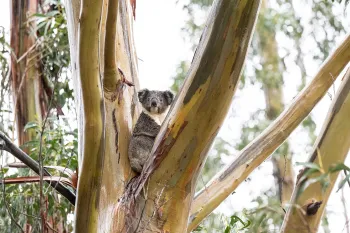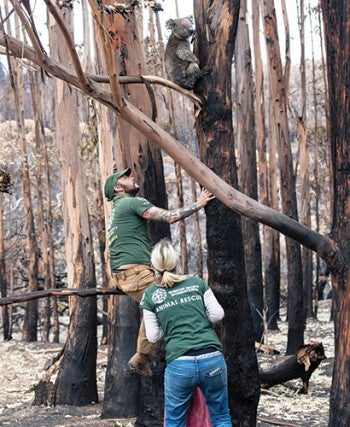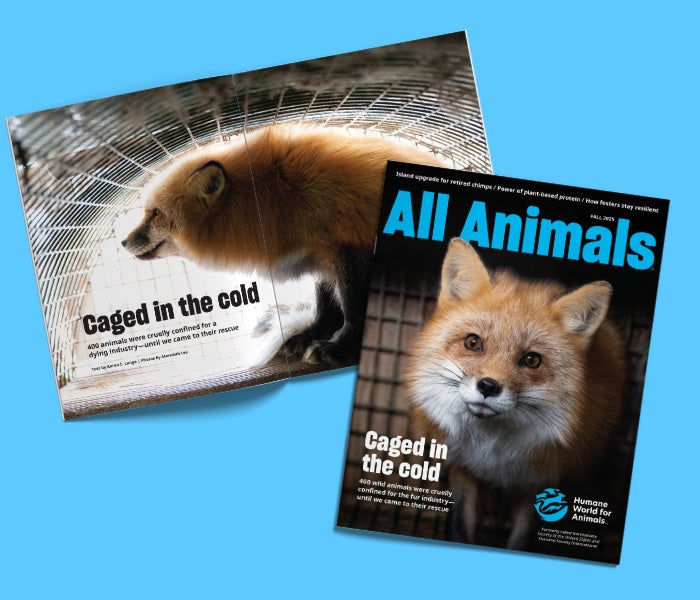The now infamous Black Summer bushfires raged across Australia between June 2019 and March 2020, scorching more than 60 million acres, killing 33 people, and killing or displacing nearly 3 billion animals. As the fires burned, our Animal Rescue Team deployed to Kangaroo Island to join our Humane World for Animals Australia colleagues on the ground. They found a once lush landscape rendered to ash and the charred bodies of thousands of animals.
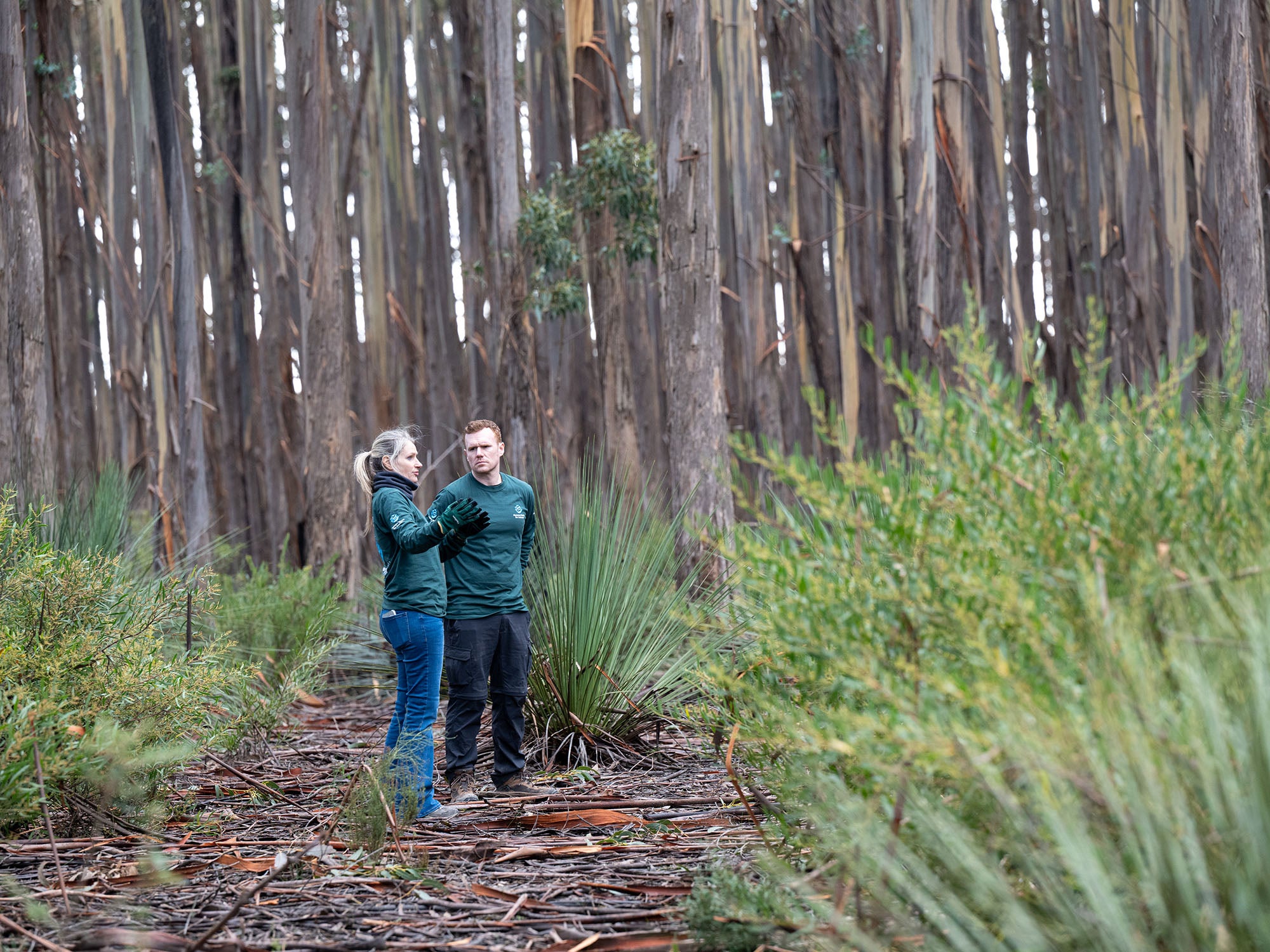
Five years after the fires, Georgie Dolphin and Evan Quartermain return to Kangaroo Island to find a thriving landscape.
Humane World for Animals team members Evan Quartermain and Georgie Dolphin stand amidst healthy, green eucalyptus trees on Kangaroo Island for the first time since the bushfire rescues five years ago; now, they look for animals and reflect on their memories. Kangaroo Island has been known for its endless eucalyptus plantations—rows upon rows of thin, towering trees with bunches of green. Five years after being burned to shriveled twigs, the remaining trees have sprouted to new heights even with intermittent droughts and, once again, provide shelter and food to many animals.
Looking over the now "thick blanket of green,” Evan describes this visit as a sort of homecoming as he recalls the once familiar apocalyptic moonscape. “It has really drilled home that time is an incredible healer and, even though terrible things happened here and we witnessed such trauma across this landscape, that the land has healed and things are recovering.”
For Georgie, program manager of animal welfare, revisiting has “brought the memories all back so vividly, almost as if it was yesterday.”
“The contrast is extraordinary. What was once a charred, gray, desolate landscape stripped of any color and an eerie silence because no birds were singing—it was totally silent—is now bursting with life again,” she says. “Areas that were totally decimated by fire—with blackened lifeless trees; charred animal corpses littering the ground with the gray dusting of ash everywhere—have been transformed into this wilderness.”
Koalas now climb to new heights in new growth
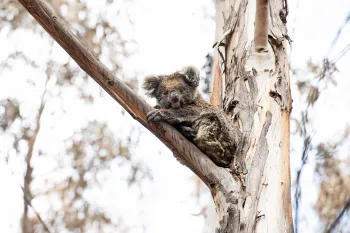
Meredith Lee/Humane World for Animals
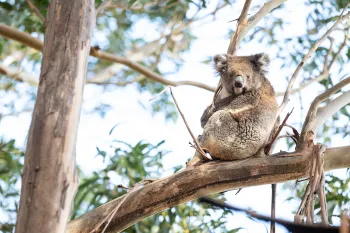
Meredith Lee/Humane World for Animals
A koala with a burned nose (left) rests across a scarred branch and peers at Humane World rescuers. Today, koalas (right) sit amongst vibrant, green leaves. During the rescue, our team searched for koalas who were at the base of trees or close to the ground. These behaviors signaled the koala was in distress.
Georgie recalls quietly approaching these injured koalas from behind, wrapping them in a towel and scooping them up. As she walks through Kangaroo Island now, one memory of a baby koala comes to mind. “As I was embracing this tiny creature, our eyes locked, and I was wondering what on earth they must be thinking when they were staring up at me. And I think I’ll just treasure that moment forever.”
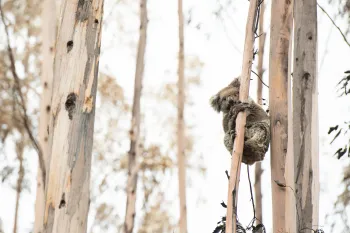
Meredith Lee/Humane World for Animals
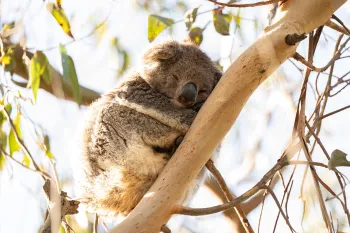
Meredith Lee/Humane World for Animals
Another koala (left) with singed fur clings to a scorched eucalyptus tree after the 2020 fires. Surviving the fires was the first challenge. Those koalas who made it through encountered a desolate landscape, where their main food source had been reduced to ash.
Five years after the fires, koalas climb to new heights in towering blue gum trees. Sleepy, fluffy and content, they can be hard to spot. A koala (right) naps peacefully high up in the bough.
Since the Black Summer fires, Evan says Humane World Australia has been focused on establishing support and building capacity across the country to prepare for the next disaster.
“We’re seeing more fires. We’re seeing worse fires. And because of that, we have an obligation to help the animals who are suffering so much more in this situation we have created,” he adds. “We want to get in there and make sure that while we can’t prevent the disasters from happening, that we can minimize the suffering that occurs during them.”
After the fires, kangaroos find care and support
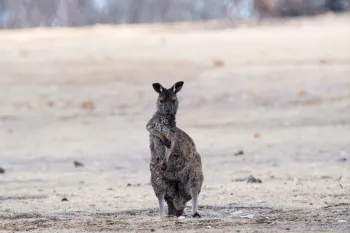
Meredith Lee/Humane World for Animals
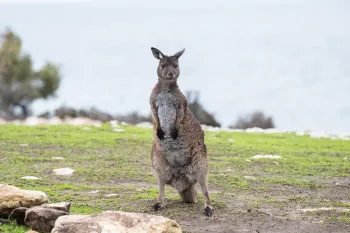
Meredith Lee/Humane World for Animals
A kangaroo (left) cradles their injured arm after the fires and stares into the distance. Now, five years later, a kangaroo (right) enjoys a leafy nibble near one of the wildlife care sites in the area.
Burned, disoriented and tired, kangaroos wandered the desolate landscape of Kangaroo Island during and after the fires. The once green and lush ground was suddenly barren, and they struggled to find any sort of sustenance. Our team spotted kangaroos (below, left) with feet that were so badly burned their paws and toes split apart, still they tried to hop in search of food.
“I really remember in a lot of areas just that bare, rocky, dirt ground covered in ash with rippling heat coming off it. We were 40-plus C [104 F] days almost every day across ashen landscapes, scanning the gum plantations for signs of life among that constant smell of dust and death,” Evan says.
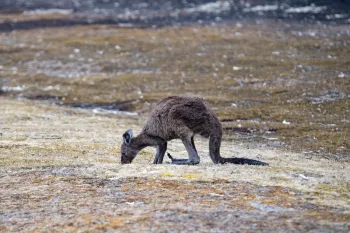
Meredith Lee/Humane World for Animals
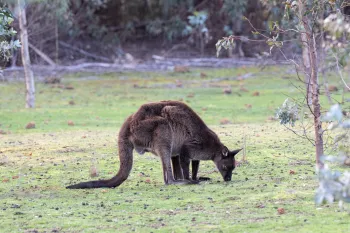
Meredith Lee/Humane World for Animals
More than five years later, healthy kangaroos (right) forage and hop about the island.
“Kangaroos have been essentially starving from the lack of good nutritional grass coverage, so we’ve been able to help carers by providing them with kangaroo pellets and things like that that they can scatter across the landscape and support these animals in the hardest times so that they can live on and rebound back to the populations we saw before the fire really ravaged this island,” Evan adds.
Into the woods
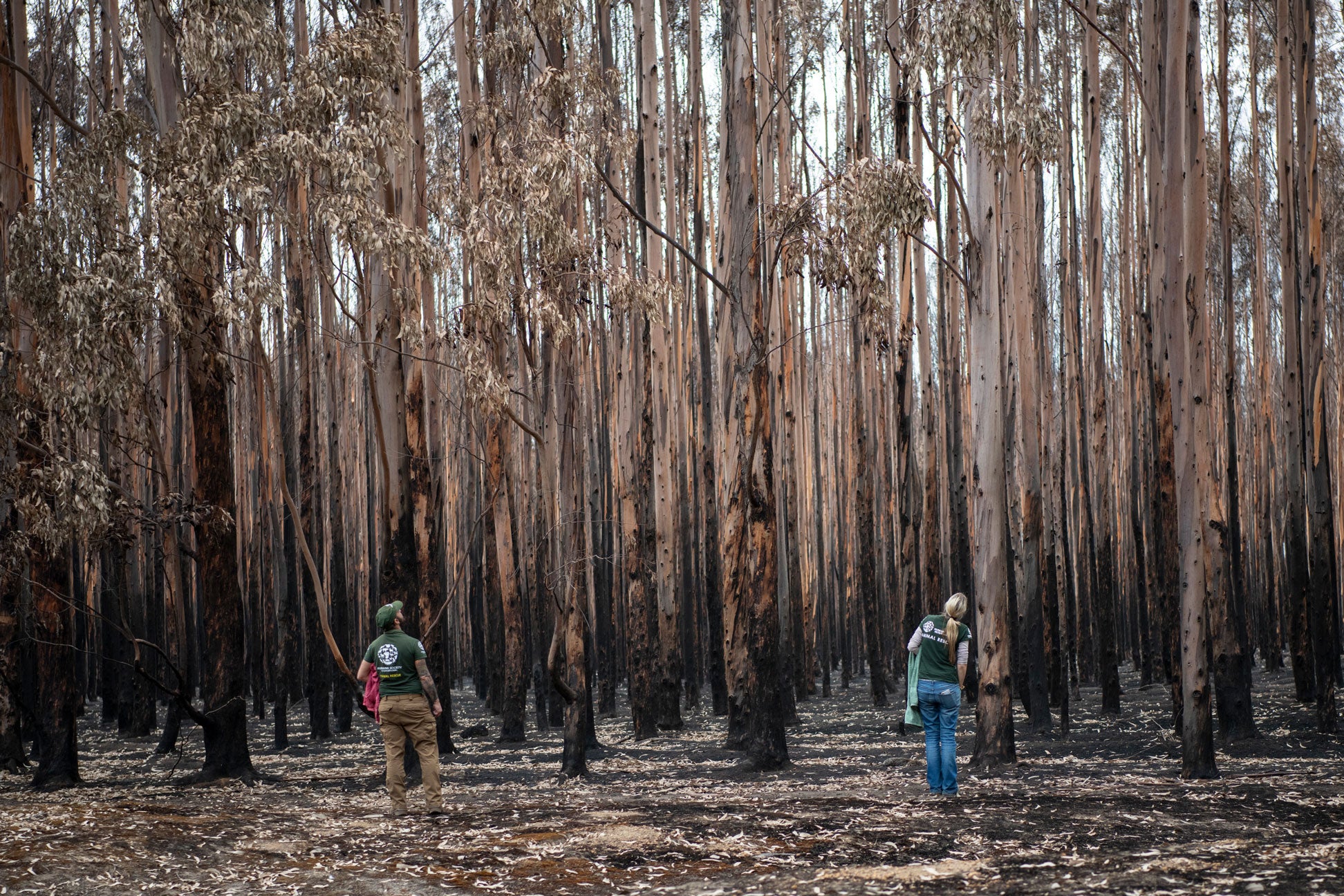
Georgie recalls spending hours upon hours scanning rows and rows of trees for any signs of life during the first day of her two rescue deployments on Kangaroo Island. “As we desperately searched, we’d see a ball of gray fur at the base of a blue gum tree, and we realized that this gray mound was a surviving and weak koala. Having completely given up, they had just surrendered totally, and they were just literally waiting to die.”
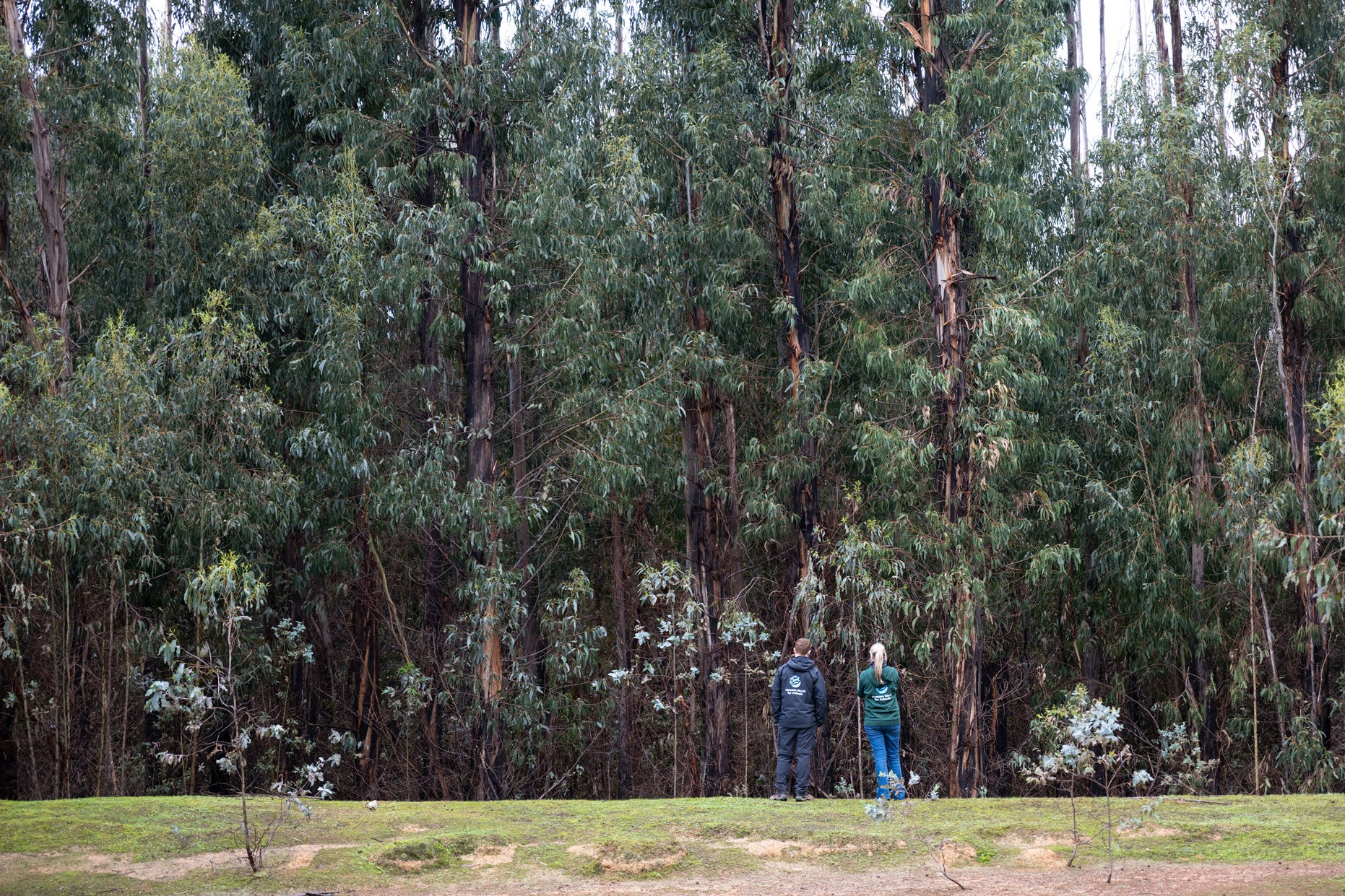
In what feels like a surreal twist, Evan finds himself walking back through some of the most traumatic areas of the 2020 rescue and looking for animals. “I remember for a long time after our first deployments here that was what I dreamt about—for a long time. Scanning these monochrome sticks of trees looking for signs of life.”
The future of our work on Kangaroo Island
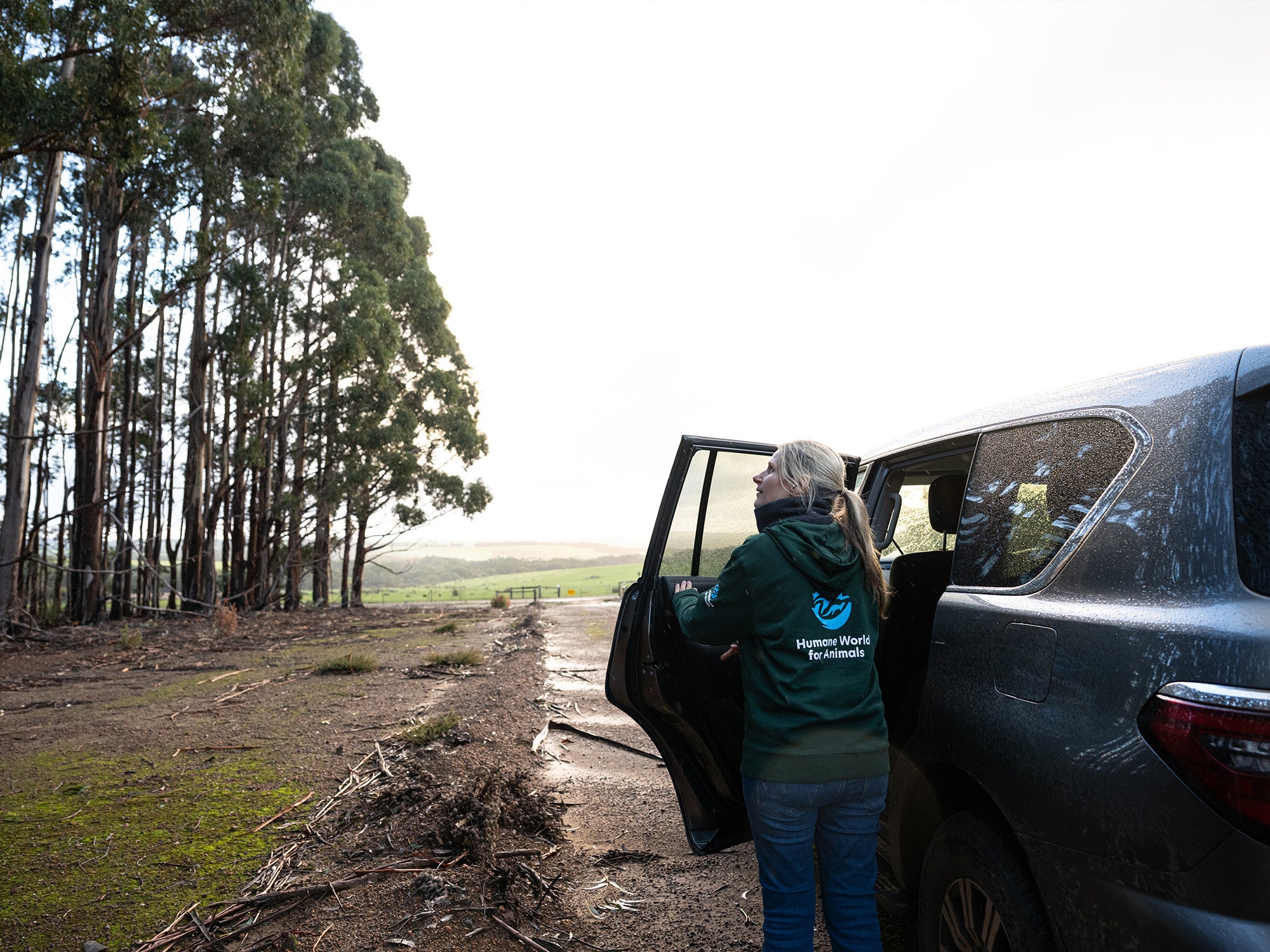
After touring Kangaroo Island again and visiting with local wildlife caretakers and rehabbers, Georgie Dolphin prepares to head out. To her left is a plantation of giant, leafy blue gum trees. She says it is hard to recognize them. After the fires, these trees were rows of toothpicks with nothing in between. “It didn’t look like it was from planet Earth.”
Although the signs of damage remain, the amount of regrowth astonishes Georgie. “I just really hope that this area never has to go through the same again and that these koalas are going to prosper.”
Through disaster response and preparedness grants, we continue to support and fund several licensed wildlife carers and rehabbers on Kangaroo Island, who have been looking after kangaroos, possums, seabirds and more who were affected by the fires and are still in danger with drought and the harvesting of eucalyptus plantations. Our support helps to ensure medicine, water and specialized food remain accessible.
Yet the harvesting of eucalyptus trees remains a major threat. Just out of frame of this hopeful image is a cleared parcel of land. While they were revisiting Kangaroo Island and the sites of the 2020 rescue, Evan and Georgie came across large logging operations.
Within these woods, thousands of animals find refuge and food, oblivious to this danger. But the team is on it, and efforts are already underway to confront the issue.
For now, our rescuers leave Kangaroo Island with a sense of peace and purpose.
“What happened here isn’t forgotten. The trees are still incredibly fire-scarred, even the ones that have somehow survived in this miraculous way that eucalypti do,” Evan says. “It’s feeling lush, and it’s just a place where you’d want to be—koala, kangaroo and human. That certainly wasn’t the case five years ago.”
Related stories
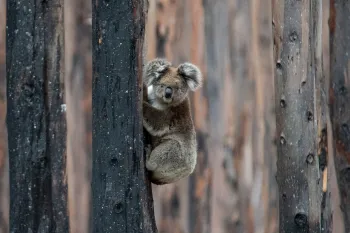
Meredith Lee/The HSUS
As bushfires in late 2019 and early 2020 reduced Australia’s vibrant landscape into scorched earth and destruction, our rescuers mobilized to help.

Hemanth Byatroy/HSI
After heavy rains caused a series of landslides in the Wayanad district, Humane World rescuers step in to help stranded animals.
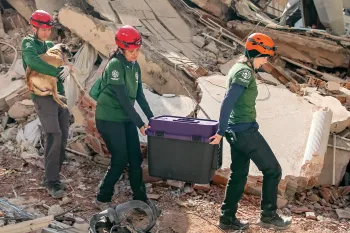
Emrah Gurel/AP Images for HSI
Humane World for Animals (formerly called Humane Society International) disaster responders help a community devastated by earthquakes in Antakya, Türkiye.
